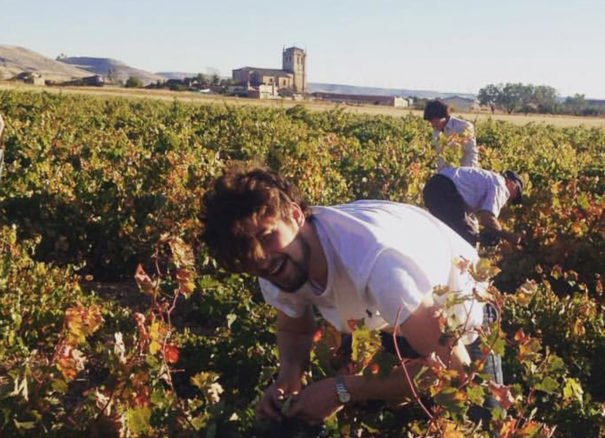
We Don’t Make Good Wine, We Make Wine For Drinking

We Don’t Make Good Wine, We Make Wine For Drinking
Wine in Villaveta
My girlfriend’s family has been making wine for as long as anyone can remember. The vines in the in their small vineyard in the village of Villaveta, near Burgos, are over a hundred years old.
The Callejas don’t profess to make great wine. It’s not sold in supermarkets, or swilled in thin-stemmed crystal glasses. It’s drunk in whatever’s available, in a chunky tumbler or a porron. It was, and still is, made for the family and close friends. Indeed, the only occasion in which it passed a stranger’s lips was when my girlfriend’s grandfather included a wine barrel in the contract for the seasonal laborers that worked the farm during the summer months.
But now that the farm is no longer working, and the village is all but abandoned, the Calleja’s wine fuels their weekly family lunches, their arguments, their nostalgia, their hare-brained schemes.
Villaveta is a handful of ramshackle houses all leaning on each other for support. A community dropped in the flat, fertile middle of Castilla y Leon. On the dusty streets and in mud-brick houses, life is slow and unchanging.
But this soporific aesthetic conceals a more diligent past. Villaveta was a working village, where life was tough and luxuries sparse. Running water has only been around for some 35 years, and before that the villagers drank wine because it was safer to drink than the often stagnant well-water. The wine harvest was a necessity.
This year was my first harvest. Among the vines, members of the family foraged ceaselessly; their curved backs bobbed above the foliage like rocks in a shallow river. At the side of the field a group of old men, their postures stooped, chatted through clouds of cigarette smoke.
We tore the grapes from their branches, keeping them as clean as possible from leaves, and threw them into large buckets located all over the vineyard. These buckets were collected and tipped into larger containers that were, in turn, picked up by a tractor making its way up and down the field.
Unlike vines in most commercial vineyards with stems trained up poles or around wires, these vines sprawled across the ground like giant spiders. The dark purple grapes were harder to see; they were lower down and required greater determination to get to. I cut my hands on the stems and was stung by lingering bees. My joints stiffened, and my nails tinged purple. But we labored unconcernedly under the autumn sun.
Around 11 o’clock, I wandered back to the family home to start lunch. I often cooked for their family and had been asked that day to cook for the pickers. In a large cauldron, hunched over a blisteringly hot stove, I prepared a simple stew with vegetables from the garden and some of the family’s chickens.
It took another four hours until the pickers finished. The grapes were carried to a shed to be machine-pressed (in the past they would have been stamped on by foot), and the pickers carried themselves to the house to be replenished. As they came, we opened and served bottles from the previous year’s vintage. People knocked back the red wine gladly, taking their minds off the fields.
And when lunch did start, it didn’t end. On a long table in my girlfriend’s family’s garden, full of callouses and cuts, we drank until the tablecloth was sodden and our lips were as black as our fingernails. We ate lunch until it was time for dinner.